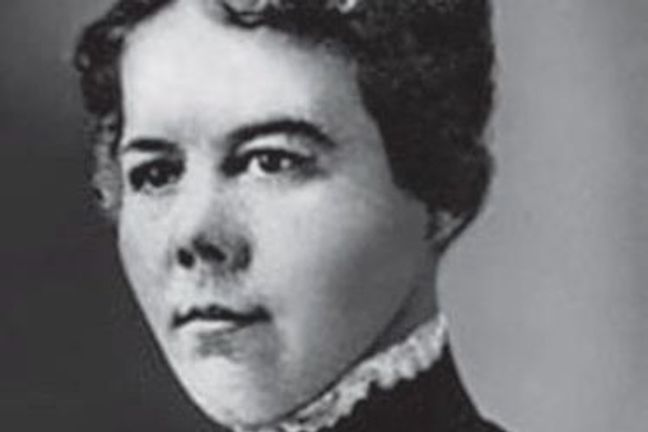
Celebrated as the first Native American woman to argue before the Supreme Court, Eliza “Lyda” Burton Conley, a dedicated member of the Wyandot tribe, is known for her commitment to the pursuit of legal justice. Born between 1868 and 1869 to Eliza Burton Zane Conley, a member of the Wyandot tribe, and Andrew Conley, an English farmer, Lyda Conley was the youngest of four daughters. Raised in Wyandotte County, Kansas, the Conley daughters were direct descendants of the great Wyandot Chief Tarhe.
Eliza and Andrew Conley encouraged their children to seek higher education. Every day, Lyda and one of her sisters rowed a small boat across the Missouri River to attend Park College in Missouri. Conley later trained to become a telegraphic operator. She taught telegraphy at Spalding Business College and Sunday School at the Episcopal Church.
In 1902, Conley graduated from the Kansas City School of Law as one of four women. She was the first woman to pass the Missouri bar. Less than a decade later, on January 14, 1910, Conley became the first Native American woman to stand before the United States Supreme Court.
The case was personal for Conley. The government authorized the sale of Huron Cemetery (now known as the Wyandot National Burying Ground), where Conley’s mother, sister, and ancestors had been laid to rest. Conley and her sisters did not take lightly to this authorization, and, armed with shotguns and broomsticks, built a small shed among the graves. The sisters defended the area in shifts to protect the burial grounds.
Aware their occupation of the cemetery would not guarantee the safety and peace of their ancestors, Conley filed a petition for an injunction in the U.S. Circuit Court for the District of Kansas on July 11, 1907. The Court ruled against her, and Conley took the case to the Supreme Court. Since she was not admitted to the Supreme Court bar, she appeared in court in propria persona,[i] acting as named plaintiff in the case.
While the Supreme Court ultimately upheld the Circuit Court’s ruling, stating the government had a right to sell the land, the Conley sisters remained undeterred and continued to guard the cemetery. Although federal marshals stormed the cemetery and destroyed the sisters’ shelter at least three times, Lyda and her siblings refused to retreat and rebuilt their cabin each time.
The Supreme Court case caught the attention of Charles Curtis, a Kansas State senator. In 1913, Curtis wrote and passed a law to protect the cemetery from future development. Despite the new law, Conley and her sisters remained active in their shifts to protect their relatives and ancestors, spending much of their time at the cemetery. In her efforts, Conley was arrested multiple times. Once, after she was offered a choice between paying $10 or spending 10 days in jail on a trespass charge, she chose to spend time in jail.
In 1946, Conley was tragically killed. She was buried next to her mother and sister in the cemetery she had fought hard to protect. 25 years later, the burial grounds were added to the National Register of Historic Places and deemed a National Historic Landmark in 2017. As a National Historic Landmark, the ancestral burial grounds are protected from any development or disruption to the grave sites.
Conley’s arguments in the Supreme Court not only spurred the government to protect the cemetery, but also laid the groundwork for future movements and motions. As the first Native American woman to argue in front of the Supreme Court, she leaves behind an incredible legacy. Her dedication to protecting her tribe’s history and property would go on to help protect not only her people, but also tribes across the country. Conley’s arguments contributed to the Native American Graves Protection and Repatriation Act, which protects many indigenous burial grounds and culturally significant items around the country from being disturbed or sold.[ii]
[i] https://digitalcommons.law.yale.edu/yjlf/vol8/iss1/2/
[ii] https://www.nps.gov/subjects/nagpra/index.htm

 Cannabis Workers Allege Quota to Trim 4 Pounds a Day Violates the California Labor Code
Cannabis Workers Allege Quota to Trim 4 Pounds a Day Violates the California Labor Code
 The Ninth Circuit Reminds Us: Every Word Matters
The Ninth Circuit Reminds Us: Every Word Matters
 NO WAY, PRO SE! The Consequences of Abusing the Judicial System as a Pro Se Litigant in Colorado
NO WAY, PRO SE! The Consequences of Abusing the Judicial System as a Pro Se Litigant in Colorado
 Victim of Financial Mismanagement or Unlawful Retaliation? New Jersey City University Program Founder Claims School Retaliated After Reporting Alleged Sexual Harassment
Victim of Financial Mismanagement or Unlawful Retaliation? New Jersey City University Program Founder Claims School Retaliated After Reporting Alleged Sexual Harassment
 “Real Housewives” Gets a Reality Check
“Real Housewives” Gets a Reality Check
 Missing a Chapter: Insufficiency of Expert Deposition Testimony in Medical Malpractice Litigation
Missing a Chapter: Insufficiency of Expert Deposition Testimony in Medical Malpractice Litigation
 Crash Course: Why Summary Judgment Misses the Mark in Illinois Multi-Cause Limousine Crash Collision
Crash Course: Why Summary Judgment Misses the Mark in Illinois Multi-Cause Limousine Crash Collision
 Bitter Truths: Lead, Cadmium, and Defective Pleadings in California Chocolate Class Action
Bitter Truths: Lead, Cadmium, and Defective Pleadings in California Chocolate Class Action
 The Law of Unintended Consequences: Including Insurance Brokers in Litigation Strategy Communication May Waive the Attorney-Client Privilege
The Law of Unintended Consequences: Including Insurance Brokers in Litigation Strategy Communication May Waive the Attorney-Client Privilege